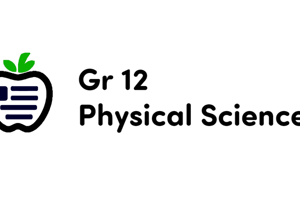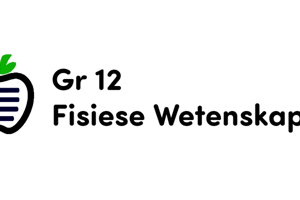Podcast
Questions and Answers
What is an addition reaction?
What is an addition reaction?
- Two reactants add together to form a single product. (correct)
- A single reactant reorganizes its bonds.
- A single reactant splits into two products.
- Two reactants exchange parts to give two new products.
What is an example of an addition reaction?
What is an example of an addition reaction?
Ethene (C2H4) + hydrobromic acid (HBr) >> C2H5Br
What happens during an elimination reaction?
What happens during an elimination reaction?
- A single reactant splits into two products. (correct)
- A single reactant reorganizes its bonds.
- Two reactants add together.
- Two reactants exchange parts.
Provide an example of an elimination reaction.
Provide an example of an elimination reaction.
What do substitution reactions involve?
What do substitution reactions involve?
What is an example of a substitution reaction?
What is an example of a substitution reaction?
Rearrangement reactions involve splitting a single reactant into multiple products.
Rearrangement reactions involve splitting a single reactant into multiple products.
What is an isomer?
What is an isomer?
What is a mechanism in chemistry?
What is a mechanism in chemistry?
In a reaction, specific bonds are _____ in reactant molecules.
In a reaction, specific bonds are _____ in reactant molecules.
In a reaction, specific bonds are _____ in product molecules.
In a reaction, specific bonds are _____ in product molecules.
What are the two ways to break covalent bonds?
What are the two ways to break covalent bonds?
What characterizes homolytic cleavage?
What characterizes homolytic cleavage?
What does heterolytic cleavage result in?
What does heterolytic cleavage result in?
What are the two ways to form covalent bonds?
What are the two ways to form covalent bonds?
What is characteristic of radical reactions?
What is characteristic of radical reactions?
What defines a nucleophile?
What defines a nucleophile?
Provide examples of nucleophiles.
Provide examples of nucleophiles.
What is an electrophile?
What is an electrophile?
Provide examples of electrophiles.
Provide examples of electrophiles.
What is a carbocation?
What is a carbocation?
What does Delta G represent?
What does Delta G represent?
What is the Gibbs free energy equation?
What is the Gibbs free energy equation?
What does the equilibrium constant equation represent?
What does the equilibrium constant equation represent?
What characterizes exergonic reactions?
What characterizes exergonic reactions?
What characterizes endergonic reactions?
What characterizes endergonic reactions?
What is enthalpy change?
What is enthalpy change?
What characterizes an exothermic reaction?
What characterizes an exothermic reaction?
What characterizes an endothermic reaction?
What characterizes an endothermic reaction?
What does entropy change represent?
What does entropy change represent?
What does a negative delta S indicate?
What does a negative delta S indicate?
What does a positive delta S indicate?
What does a positive delta S indicate?
What is bond dissociation energy?
What is bond dissociation energy?
Flashcards
Addition Reaction
Addition Reaction
Two reactants combine to form a single product.
Elimination Reaction
Elimination Reaction
A single reactant breaks down into two products, often with a small molecule released.
Substitution Reaction
Substitution Reaction
Two reactants exchange parts, resulting in two different products.
Rearrangement Reaction
Rearrangement Reaction
Signup and view all the flashcards
Isomer
Isomer
Signup and view all the flashcards
Mechanism
Mechanism
Signup and view all the flashcards
Bond Breaking
Bond Breaking
Signup and view all the flashcards
Bond Formation
Bond Formation
Signup and view all the flashcards
Homolytic Cleavage
Homolytic Cleavage
Signup and view all the flashcards
Heterolytic Cleavage
Heterolytic Cleavage
Signup and view all the flashcards
Homogenic Bond Formation
Homogenic Bond Formation
Signup and view all the flashcards
Heterogenic Bond Formation
Heterogenic Bond Formation
Signup and view all the flashcards
Radical Reactions
Radical Reactions
Signup and view all the flashcards
Polar Reactions
Polar Reactions
Signup and view all the flashcards
Polarity
Polarity
Signup and view all the flashcards
Partial Positive Charge (δ+)
Partial Positive Charge (δ+)
Signup and view all the flashcards
Partial Negative Charge (δ-)
Partial Negative Charge (δ-)
Signup and view all the flashcards
Polarizability
Polarizability
Signup and view all the flashcards
Initiation, Propagation, Termination
Initiation, Propagation, Termination
Signup and view all the flashcards
Nucleophile
Nucleophile
Signup and view all the flashcards
Electrophile
Electrophile
Signup and view all the flashcards
Carbocation
Carbocation
Signup and view all the flashcards
Gibbs Free Energy (ΔG)
Gibbs Free Energy (ΔG)
Signup and view all the flashcards
Exergonic Reactions
Exergonic Reactions
Signup and view all the flashcards
Endergonic Reactions
Endergonic Reactions
Signup and view all the flashcards
Enthalpy Change (ΔH)
Enthalpy Change (ΔH)
Signup and view all the flashcards
Entropy Change (ΔS)
Entropy Change (ΔS)
Signup and view all the flashcards
Exothermic Reactions
Exothermic Reactions
Signup and view all the flashcards
Endothermic Reactions
Endothermic Reactions
Signup and view all the flashcards
Bond Dissociation Energy
Bond Dissociation Energy
Signup and view all the flashcards
Study Notes
Types of Reactions
-
Addition Reactions: Involve combining two reactants to form a single product, with no leftover atoms.
-
Example: Ethene (C2H4) plus hydrobromic acid (HBr) yields bromethane (C2H5Br).
-
Elimination Reactions: A single reactant breaks down into two products, typically producing a small molecule like water.
-
Example: Ethanol (C2H5OH) with an acid catalyst leads to ethene (C2H4) and water (H2O).
-
Substitution Reactions: Two reactants swap parts, resulting in two new products.
-
Example: Methane (CH4) reacts with chlorine (Cl2) to produce chloromethane (CH3Cl) and hydrochloric acid (HCl).
-
Rearrangement Reactions: A single reactant reorganizes its bonds and atoms to form an isomeric product.
Key Concepts
- Isomer: Compounds with the same molecular formula but different structures.
- Mechanism: The detailed process outlining what occurs during a chemical reaction.
Bond Interactions
-
Bond Breaking: Involves specific bonds in reactant molecules being broken.
-
Bond Formation: Specific bonds in product molecules are formed.
-
Covalent Bond Cleavage: Consists of homolytic (symmetrical) and heterolytic (unsymmetrical) cleavage.
-
Homolytic Cleavage: Each product fragment retains one electron, creating radicals.
-
Heterolytic Cleavage: One fragment retains both bonding electrons, leading to an empty orbital in the other fragment.
-
Bond Formation: Can be homogenic (one electron from each reactant) or heterogenic (both electrons from one reactant).
Reaction Types
- Radical Reactions: Occur through symmetrical bond breaking and forming; radicals are highly reactive due to unpaired electrons.
- Polar Reactions: Arise from unsymmetrical bond breaking and forming; common due to the attraction between polar functional groups.
Polarity and Charge
- Polarity: Determined by electronegativity differences across atoms.
- Carbon-Halogen Bonds: Carbon bonded to halogens carries a partial positive charge (S+).
- Carbon-Metal Bonds: Carbon linked with metals carries a partial negative charge (S-).
Polarizability
- Definition: Refers to the change in electron distribution around an atom due to surrounding electric fields; larger atoms with loosely held electrons are more polarizable.
Radical Reactions Steps
- Consist of three phases: initiation, propagation, and termination.
Nucleophiles and Electrophiles
-
Nucleophile: Electron-rich species capable of donating electron pairs; examples include ammonia, water, hydroxide ion, and chloride ion.
-
Electrophile: Electron-poor species seeking to accept electron pairs; examples include acids, alkyl halides, and carbonyl compounds.
-
Carbocation: Positively charged intermediate that acts as an electrophile, accepting electron pairs from nucleophiles.
Thermodynamics of Reactions
-
Gibbs Free Energy (ΔG): Indicates energy changes during reactions; calculated as free energy of products minus free energy of reactants.
-
Equilibrium Constant: Expressed as ([C][D])/([A][B]).
-
Exergonic Reactions: Favorable reactions with negative ΔG; energy released to surroundings.
-
Endergonic Reactions: Unfavorable reactions with positive ΔG; energy absorbed from surroundings.
-
Enthalpy Change (ΔH): Represents heat change; exothermic reactions release heat (negative ΔH), while endothermic reactions absorb heat (positive ΔH).
-
Entropy Change (ΔS): Indicates molecular randomness during reactions; positive ΔS signifies increased randomness, while negative ΔS indicates decreased randomness.
Bond Energy
- Bond Dissociation Energy: The energy required to break a specific bond into two radical fragments in the gas phase.
Studying That Suits You
Use AI to generate personalized quizzes and flashcards to suit your learning preferences.




